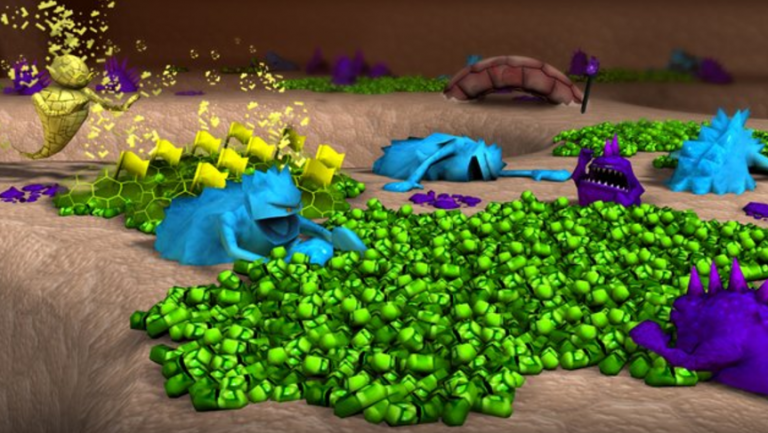The More You Know About Ebola the Better!
Frequently Asked Questions
1. How can I determine whether a particular EPA-registered hospital disinfectant is appropriate for use in the room of a patient with suspected or confirmed Ebola virus infection?
Begin by looking at the product label or product insert or, if these are not available, search the EPA search engine for this information. Users should be aware that an ‘enveloped’ or ‘non-enveloped virus’ designation may not be included on the container label. Instead check the disinfectant’s label for at least one of the common non-enveloped viruses (e.g., norovirus, rotavirus, adenovirus, poliovirus).
2. Are there special instructions for cleaning and disinfecting the room of a patient with suspected or confirmed Ebola virus infection?
Daily cleaning and disinfection of hard, non-porous surfaces (e.g., high-touch surfaces such as bed rails and over bed tables, housekeeping surfaces such as floors and counters) should be done. Before disinfecting a surface, cleaning should be performed. In contrast to disinfection where products with specific claims are used, any cleaning product can be used for cleaning tasks. Use cleaning and disinfecting products according to label instructions. Check the disinfectant’s label for specific instructions for inactivation of any of the non-enveloped viruses (e.g., norovirus, rotavirus, adenovirus, poliovirus) follow label instructions for use of the product that are specific for inactivation of that virus. Use disposable cleaning cloths, mop cloths, and wipes and dispose of these in leak-proof bags. Use a rigid waste receptacle designed to support the bag to help minimize contamination of the bag’s exterior.
3. How should spills of blood or other body substances be managed?
The basic principles for blood or body substance spill management are outlined in the United States Occupational Safety and Health Administration (OSHA) Bloodborne Pathogen Standards (29 CFR 1910.1030). CDC guidelines recommend removal of bulk spill matter, cleaning the site, and then disinfecting the site.For large spills, a chemical disinfectant with sufficient potency is needed to overcome the tendency of proteins in blood and other body substances to neutralize the disinfectant’s active ingredient. An EPA-registered hospital disinfectant with label claims for non-enveloped viruses (e.g., norovirus, rotavirus, adenovirus, poliovirus) and instructions for cleaning and decontaminating surfaces or objects soiled with blood or body fluids should be used according to those instructions.
4. How should disposable materials (e.g., any single-use PPE, cleaning cloths, wipes, single-use microfiber cloths, linens, food service) and linens, privacy curtains, and other textiles be managed after their use in the patient room?
These materials should be placed in leak-proof containment and discarded appropriately. To minimize contamination of the exterior of the waste bag, place this bag in a rigid waste receptacle designed for this use. Incineration or autoclaving as a waste treatment process is effective in eliminating viral infectivity and provides waste minimization. If disposal requires transport offsite then this should be done in accordance with the U.S. Department of Transportation’s (DOT) Hazardous Materials Regulations (HMR, 49 C.F.R., Parts 171-180).Guidance from DOT has been released for Ebola.
5. Is it safe for Ebola patients to use the bathroom?
Yes. Sanitary sewers may be used for the safe disposal of patient waste. Additionally, sewage handling processes (e.g., anaerobic digestion, composting, and disinfection) in the United States are designed to inactivate infectious agents.
6. How long does the Ebola virus persist in indoor environments?
Only one laboratory study, which was done under environmental conditions that favor virus persistence, has been reported. This study found that under these ideal conditions Ebola virus could remain active for up to six days. In a follow up study, Ebolavirus was found, relative to other enveloped viruses, to be quite sensitive to inactivation by ultraviolet light and drying; yet sub-populations did persist in organic debris.
In the only study to assess contamination of the patient care environment during an outbreak, conducted in an African hospital under “real world conditions”, virus was not detected by either nucleic acid amplification or culture in any of 33 samples collected from sites that were not visibly bloody. Virus was detected on a blood-stained glove and bloody intravenous insertion site by nucleic acid amplification, which may detect non-viable virus, but not by culture for live, infectious virus. Based upon these data and what is known regarding the environmental infection control of other enveloped RNA viruses, the expectation is with consistent daily cleaning and disinfection practices in U.S. hospitals that the persistence of Ebola virus in the patient care environment would be short – with 24 hours considered a cautious upper limit.
For more info, Please contact Jason Soler at Jsoler@gemsupply.net
Sources
http://www.cdc.gov/vhf/ebola/hcp/environmental-infection-control-in-hospitals.html
http://www.cdc.gov/non-polio-enterovirus/about/ev-d68.html#protection
http://www.apic.org/Resource_/TinyMceFileManager/epublications/EbolaPS1403-FALL-FINAL.pdf
![]()

